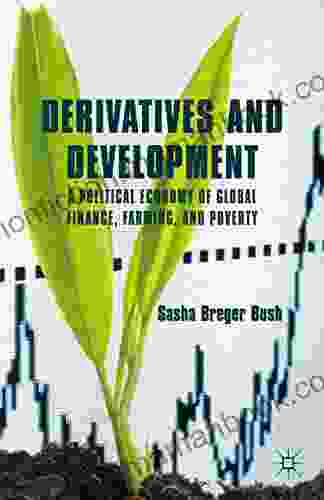International Liquidity and the Financial Crisis

International liquidity, often referred to as global liquidity, plays a vital role in facilitating international trade and investment, and in maintaining global economic stability. It encompasses the ability of central banks, governments, and other entities to access foreign currencies and financial assets to meet their international payment obligations, such as settling trade transactions, repaying foreign debt, and intervening in foreign exchange markets.
4.7 out of 5
| Language | : | English |
| File size | : | 7273 KB |
| Text-to-Speech | : | Enabled |
| Screen Reader | : | Supported |
| Enhanced typesetting | : | Enabled |
| Word Wise | : | Enabled |
| Print length | : | 386 pages |
The 2008-2009 financial crisis exposed the importance of international liquidity and highlighted its potential role in exacerbating or mitigating financial crises. This article examines the concept of international liquidity, its impact on the financial crisis, and the lessons learned that can inform policymaking and risk management strategies.
Causes and Consequences of the Financial Crisis
The financial crisis was triggered by a complex interplay of factors, including:
- Excessive risk-taking and leverage in the financial sector
- Lax lending standards and subprime mortgages
- Rising housing prices and the subsequent housing market collapse
- Interconnectedness of financial institutions and markets
The crisis created severe disruptions in international liquidity, leading to:
- A global credit crunch and reduced lending
- Sudden capital outflows from emerging markets
- Currency depreciation and instability
- Heightened risk aversion and reduced investment
International Liquidity and the Crisis
International liquidity played a multifaceted role in the financial crisis:
1. Transmission Channel
International liquidity served as a transmission channel for the crisis. The interconnectedness of financial institutions and markets meant that the financial turmoil in one country could quickly spread to others through the flow of capital. When the crisis hit, international liquidity facilitated the rapid withdrawal of funds from affected countries, exacerbating the liquidity crunch and financial instability.
2. Mitigation Mechanism
International liquidity also acted as a mitigation mechanism during the crisis. Central banks utilized their foreign exchange reserves to intervene in currency markets, stabilize exchange rates, and prevent further depreciation. The International Monetary Fund (IMF) provided emergency lending to countries facing severe liquidity shortages, helping to prevent a deeper financial meltdown.
3. Policy Dilemma
Governments and central banks faced a policy dilemma during the crisis. On the one hand, they needed to maintain sufficient international liquidity to avoid financial instability and support economic recovery. On the other hand, excessive liquidity could contribute to inflation and financial bubbles. Balancing these competing objectives was a challenging task.
Lessons Learned and Policy Implications
The financial crisis highlighted the importance of international liquidity and the need for sound policy frameworks to manage it effectively. Key lessons learned include:
- Adequate Foreign Exchange Reserves: Central banks should maintain adequate foreign exchange reserves to meet potential liquidity needs during crises.
- Coordinated Policy Response: International cooperation and coordination are essential to address liquidity shortages and prevent contagion.
- Financial Stability Framework: Robust financial stability frameworks, including macroprudential regulations and risk management practices, can help mitigate financial imbalances and reduce the likelihood of liquidity crises.
- Risk Monitoring and Early Warning Systems: Early identification and monitoring of liquidity risks are crucial for timely policy responses.
- Stress Testing: Regular stress testing of financial systems can help assess resilience to liquidity shocks.
International liquidity is a critical aspect of the global financial system, facilitating international trade and investment while also influencing macroeconomic stability. The financial crisis highlighted the importance of understanding and managing international liquidity. Policymakers and central banks should prioritize measures to enhance liquidity resilience, foster financial stability, and promote international cooperation to prevent future liquidity crises and mitigate their potential impact on the global economy.
4.7 out of 5
| Language | : | English |
| File size | : | 7273 KB |
| Text-to-Speech | : | Enabled |
| Screen Reader | : | Supported |
| Enhanced typesetting | : | Enabled |
| Word Wise | : | Enabled |
| Print length | : | 386 pages |
Do you want to contribute by writing guest posts on this blog?
Please contact us and send us a resume of previous articles that you have written.
 Top Book
Top Book Novel
Novel Fiction
Fiction Nonfiction
Nonfiction Literature
Literature Paperback
Paperback Hardcover
Hardcover E-book
E-book Audiobook
Audiobook Bestseller
Bestseller Classic
Classic Mystery
Mystery Thriller
Thriller Romance
Romance Fantasy
Fantasy Science Fiction
Science Fiction Biography
Biography Memoir
Memoir Autobiography
Autobiography Poetry
Poetry Drama
Drama Historical Fiction
Historical Fiction Self-help
Self-help Young Adult
Young Adult Childrens Books
Childrens Books Graphic Novel
Graphic Novel Anthology
Anthology Series
Series Encyclopedia
Encyclopedia Reference
Reference Guidebook
Guidebook Textbook
Textbook Workbook
Workbook Journal
Journal Diary
Diary Manuscript
Manuscript Folio
Folio Pulp Fiction
Pulp Fiction Short Stories
Short Stories Fairy Tales
Fairy Tales Fables
Fables Mythology
Mythology Philosophy
Philosophy Religion
Religion Spirituality
Spirituality Essays
Essays Critique
Critique Commentary
Commentary Glossary
Glossary Bibliography
Bibliography Index
Index Table of Contents
Table of Contents Preface
Preface Introduction
Introduction Foreword
Foreword Afterword
Afterword Appendices
Appendices Annotations
Annotations Footnotes
Footnotes Epilogue
Epilogue Prologue
Prologue Gill Blanchard
Gill Blanchard Ronnee Yashon
Ronnee Yashon Margaret R Roller
Margaret R Roller Fritz Leiber
Fritz Leiber Gill Paul
Gill Paul Iris Johansen
Iris Johansen Sophie Haydon
Sophie Haydon C Fred Bergsten
C Fred Bergsten Himanshu Bhatnagar
Himanshu Bhatnagar Cherie Jones
Cherie Jones Peter Cozzens
Peter Cozzens Brennan Barnard
Brennan Barnard Margo Jefferson
Margo Jefferson Christina Hoag
Christina Hoag Daniel Donoghue
Daniel Donoghue Sir Edwin Arnold
Sir Edwin Arnold Brette Sember
Brette Sember Bradley Hope
Bradley Hope O Henry
O Henry David A Greenwood
David A Greenwood
Light bulbAdvertise smarter! Our strategic ad space ensures maximum exposure. Reserve your spot today!

 George R.R. MartinThe Fight Against Organized Crime in America: Fun Facts, Trivia, and Tidbits
George R.R. MartinThe Fight Against Organized Crime in America: Fun Facts, Trivia, and Tidbits Ray BlairFollow ·19.4k
Ray BlairFollow ·19.4k Douglas FosterFollow ·3.7k
Douglas FosterFollow ·3.7k Tyler NelsonFollow ·16.6k
Tyler NelsonFollow ·16.6k Houston PowellFollow ·11.8k
Houston PowellFollow ·11.8k Yasushi InoueFollow ·4.4k
Yasushi InoueFollow ·4.4k Gordon CoxFollow ·5.8k
Gordon CoxFollow ·5.8k Raymond ParkerFollow ·11.7k
Raymond ParkerFollow ·11.7k Bryan GrayFollow ·2.2k
Bryan GrayFollow ·2.2k

 Steve Carter
Steve CarterUnveiling the Rich Theatrical Tapestry of Russia: A...
Origins and Early...

 Frank Butler
Frank ButlerOn Talking Terms With Dogs: Calming Signals and the...
For centuries, dogs have...

 Leo Tolstoy
Leo TolstoyThe Inside Guide to Applying and Succeeding in...
Applying to...

 Cole Powell
Cole PowellThe Political Economy of Global Finance, Farming and...
The global...
4.7 out of 5
| Language | : | English |
| File size | : | 7273 KB |
| Text-to-Speech | : | Enabled |
| Screen Reader | : | Supported |
| Enhanced typesetting | : | Enabled |
| Word Wise | : | Enabled |
| Print length | : | 386 pages |













